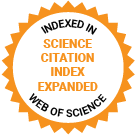Journal of Medical Internet Research
The leading peer-reviewed journal for digital medicine and health and health care in the internet age.
Editor-in-Chief:
Gunther Eysenbach, MD, MPH, FACMI, Founding Editor and Publisher; Adjunct Professor, School of Health Information Science, University of Victoria, Canada
Impact Factor 6.0 CiteScore 11.7
Recent Articles

Digital therapeutics (DTx) for children and adolescents with mental health problems have been developed in the health care industry. Despite reports of side effects from DTx for children and adolescents, there have been no guidelines to address the prevention of DTx overdependence among young users.

Diabetes-related distress (DD) is highly prevalent in individuals with diabetes mellitus (DM) and impairs quality of life. Tele-Cognitive Behavioral Therapy (Tele-CBT) shows potential for reducing DM-related psychological distress; prior research focused primarily on in-person CBT, leaving Tele-CBT’s efficacy poorly characterized.

Young and middle-aged adults are vulnerable to poor sleep quality. eHealth literacy, defined as the ability to effectively access and use digital health information, has been linked to improved health behaviors and may promote better sleep outcomes. However, its relationship with sleep quality remains unclear, especially across age groups. Age-related disparities in eHealth literacy may contribute to a digital health divide in sleep outcomes.

Many people use peer online forums to seek support for health-related problems. More research is needed to understand the impacts of forum use, and how these are generated. However, there are significant ethical and practical challenges with the methods available to do the required research. We examine the key challenges associated with conducting each of the most commonly used online data collection methods: surveys, interviews, forum post analysis; and triangulation of these methods. Based on our learning from the Improving Peer Online Forums (iPOF) study, an inter-disciplinary realist informed mixed methods evaluation of peer online forums, we outline strategies that can be used to address key issues pertaining to assessing important outcomes, facilitating participation, validating participants (users who consent to take part in one or more parts of the study), protecting anonymity, gaining consent, managing risk, multi-stakeholder engagement, and triangulation. We share this learning to support researchers, reviewers, and ethics committees faced with deciding how best to address these challenges. We highlight the need for ongoing open, transparent discussion to ensure the research field keeps pace with evolving technology design and societal attitudes to online data use.

Wearable accelerometers, which continuously record physical activity metrics, are commonly used in mobile health–enabled cardiac rehabilitation (mHealth-CR). The association between adherence to accelerometer use during mHealth-CR and improvement in clinical outcomes, such as functional capacity, is understudied. The emergence of artificial intelligence (AI) technology provides novel opportunities to investigate accelerometry use patterns in relation to mHealth-CR outcomes.

With the increasing use of machine learning (ML)-based risk prediction models for venous thromboembolism (VTE) in patients, the quality and applicability of these models in practice and future research remain unknown. The prediction mechanism of ML and the number of selected factors have been research hotspots in VTE prediction.


Internet-delivered therapist-guided therapy (e-therapy) represents a promising avenue for enhancing accessibility, treatment fidelity and scalability within child and adolescent mental health services (CAMHS). However, there remains limited synthesized evidence to guide researchers and practitioners in understanding critical barriers and facilitators influencing successful implementation in routine care settings.

Although the integration of self-monitored patient data into mental health care offers potential for advancing personalised approaches, its application in clinical practice remains largely underexplored. Capturing individuals' mental health outside the therapy room using Experience Sampling Methods (ESM) may bridge this gap by supporting shared decision-making and personalised interventions.

Despite its proven efficacy, retention in medication for opioid use disorder (MOUD) remains low, with structural and systemic barriers—such as access to care and treatment setting—alongside individual factors, including personalization and motivation, contributing to high rates of discontinuation. Digital interventions offer a promising approach to address many of these barriers; however, robust evidence for their effectiveness in improving retention and engagement with treatment remains scarce.
Preprints Open for Peer-Review
Open Peer Review Period:
-


















